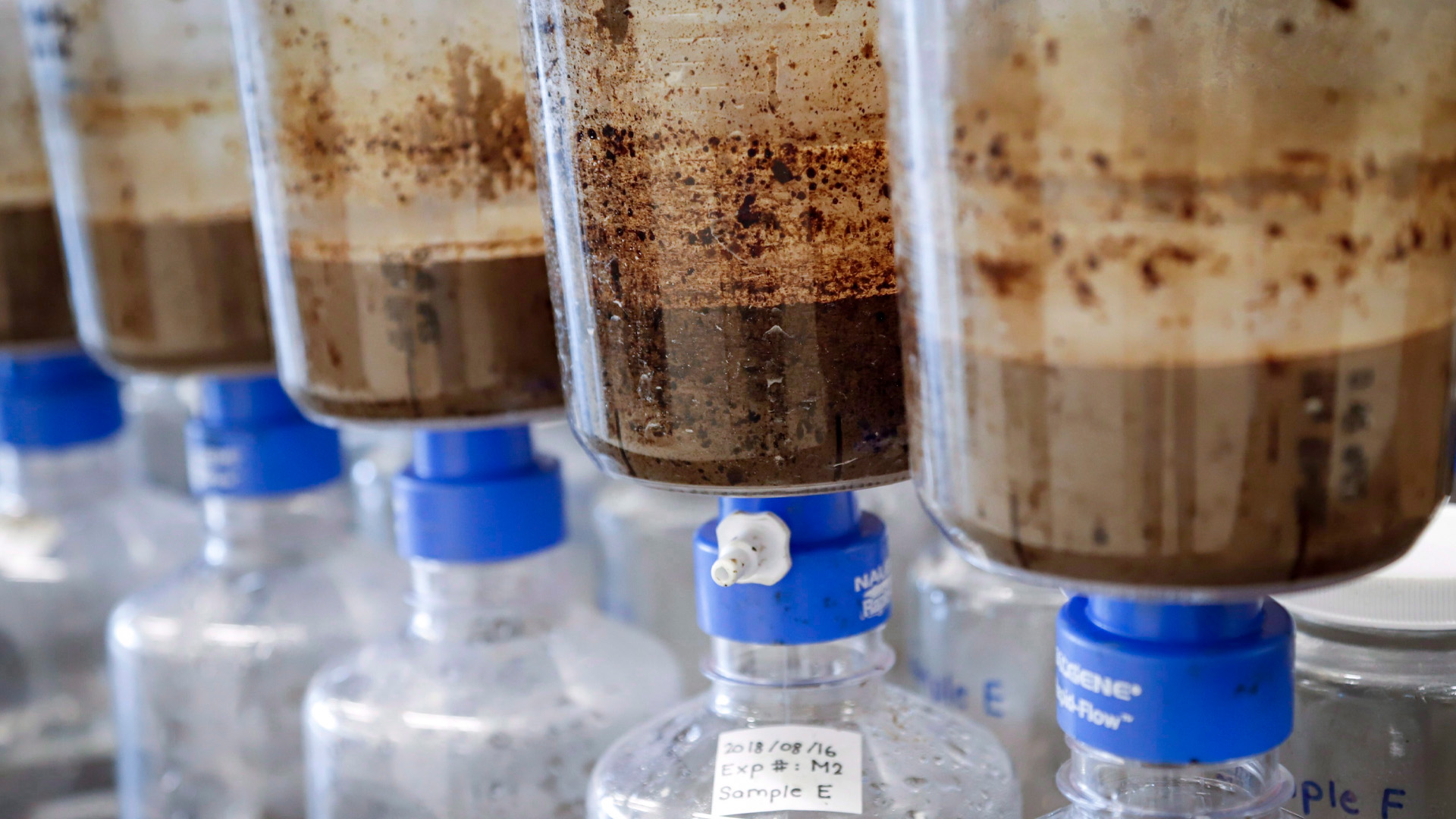
Perched on the shores of the Athabasca River in northern Alberta are a staggering 1.4 trillion litres of toxic industrial waste, stored in open pits known as tailings ponds created through oil production.
For decades, it has been public knowledge that this toxic waste is leaking into the surrounding environment. Yet the federal government has still not investigated the true dangers posed by these substances.
This could change immediately. With tools at its disposal under federal laws, it is time for Ottawa to take responsibility and protect communities and the environment from further contamination.
This is why First Nations, Métis and environmental groups joined forces in March to submit a formal request to the federal government to assess the harms caused by naphthenic acids, a major toxic component in oilsands tailings ponds. The goal is to compel the government to take further action to address oilsands water pollution. It has 90 days to respond.
Every Canadian should be protected
The federal government has the constitutional responsibility to protect people across the country from toxic pollution. It exercises this power under the Canadian Environmental Protection Act (CEPA), a cornerstone environmental law upheld by the Supreme Court of Canada.
The federal government also has other important responsibilities for protecting the environment in the oilsands region. For example, it has constitutional power over fisheries and has enacted the Fisheries Act with the purpose of “protect[ing] fish and fish habitat, including by preventing pollution.”
The oilsands are also on territory subject to Treaty 8, of which the Crown is a signatory, which affirms the rights of First Nations to practise their traditional ways of life.
Unfortunately, however, successive federal governments have not taken their environmental responsibilities in the oilsands seriously, instead exacerbating the problem by approving more mines and tailings ponds.
In 2014, MPs from the then-Liberal opposition on the Commons environment committee published a scathing report in which they denounced the “abdication of federal leadership in an area (…) that is rightfully Ottawa’s under the Constitution’s division of powers.”
They accused the Conservative government of the day of “protecting the oil sands industry” by failing to assess the toxicity of one of its most harmful components found in the tailings ponds – the naphthenic acids.
Over the years, the response from successive governments in Ottawa has often been that while it has some responsibility, it lacks the tools to effectively regulate tailings pollution.
However, in June 2023, as part of the important effort to modernize CEPA, Parliament added a new mechanism allowing any individual or organization to ask the federal government to assess, and then address, the toxicity of specific harmful substances. That’s the basis of our joint request in March for a federal review of the situation.
The risk is increasing every year
Studies prove that naphthenic acids are harmful to fish and amphibians. While human health studies are incomplete, naphthenic acids are recognized as potential endocrine disruptors.
More than 6,000 tonnes of naphthenic acids are added to tailing ponds every year, increasing the risk that more of these substances will end up in the environment through leaks, spills or other incidents. For example, naphthenic acids were found in nearby freshwater following last year’s high-profile leak from Imperial Oil’s Kearl oilsands mine.
Yet, the federal Health and Environment ministries have so far declined to conduct a risk assessment. Unlike well-known pollutants such as mercury and certain hydrocarbons, there are no official national guidelines for dealing with naphthenic acids.
The lack of a federal risk assessment has become an excuse for Ottawa to turn a blind eye to the potential harms caused by naphthenic acids, including on Indigenous communities.
The formal joint request – submitted by Athabasca Chipewyan First Nation, Keepers of the Water, and Environmental Defence, represented by Ecojustice lawyers – asks the federal government to use its powers under CEPA to conduct a formal assessment of the risks posed by oilsands naphthenic acids to the environment and human health.
If the federal government agrees, and if its assessment concludes that these substances pose a risk to human health or the environment, Ottawa will be required to adopt appropriate risk management measures.
This means the federal government could consider options such as regulations on production and conditions for the release of naphthenic acids, requiring companies to set aside funds for cleanup and demanding that the companies have environmental emergency plans to respond to incidents.
Indigenous communities are the most affected
Such tools are essential for protecting the nearby environment and people who live there, including Indigenous nations, from unacceptable levels of pollution.
The Athabasca oilsands region is a pollution hotspot and one of the gravest examples of environmental injustice in Canada.
Because this request was filed under the modernized CEPA, the federal government is required to consider the specific circumstances of “vulnerable populations” and “vulnerable environments,” as well as the principle of environmental justice when assessing the harms posed by substances and selecting risk management measures.
This gives our request more weight because pollution from the oilsands has been principally felt by Indigenous communities that are exposed to many pollutants through the air, water and the food they consume.
Action on oilsands pollution has been a long time coming. It wasn’t until 2020 that oilsands companies were required to report under the national pollutant release inventory how much naphthenic acids they produce and where they are disposing of it.
This happened only after environmental groups successfully advocated for reform. However, reporting alone is insufficient if it does not lead to action.
The ministers of Environment and Health have until June 11 to respond to our formal request and decide whether to conduct a risk assessment for oilsands naphthenic acids.
The federal government must uphold its responsibility to address toxic tailings and take action to protect people and ecosystems. For far too long, companies have been allowed to produce dangerous waste without proper investigation of the risks.










